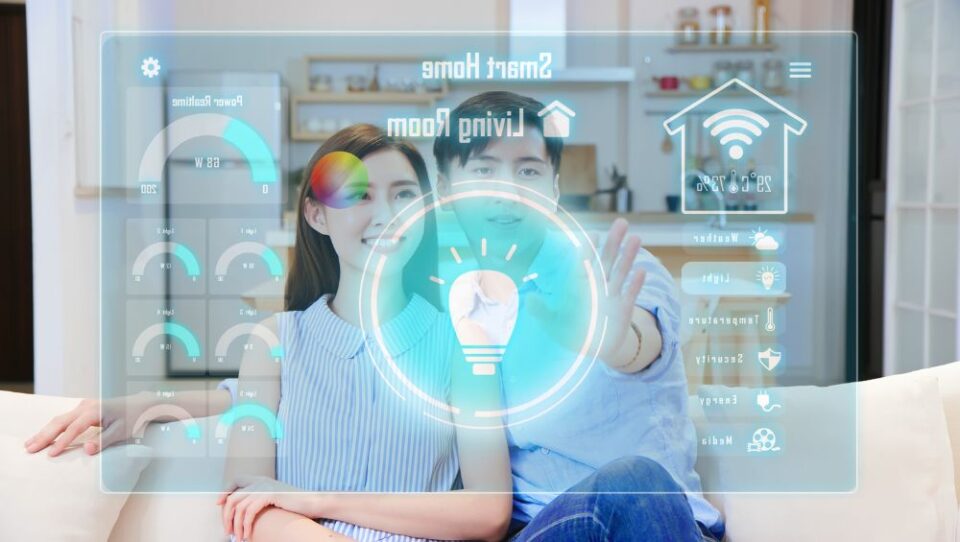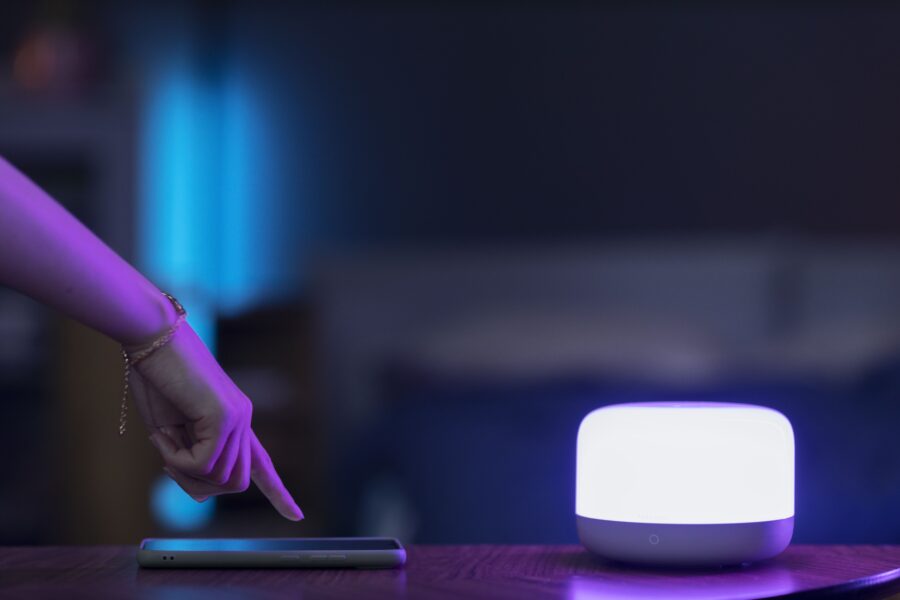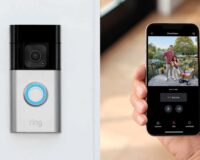The way we live in our homes is changing. With rapid advances in technology, the concept of smart homes has shifted from a futuristic dream to a reality that many homeowners are now experiencing. Smart homes are redefining convenience, security, energy efficiency, and our overall quality of life. In this article, we will explore the myriad benefits of smart homes, shedding light on how these innovative systems are transforming the way we live and interact within the walls of our dwellings.
What is Smart Home?
A smart home, also known as a connected home or home automation system, is a residence that uses advanced technology to enhance the efficiency, convenience, security, and overall control of various household functions and appliances. In a smart home, various devices and systems are interconnected and can be remotely monitored and controlled, often through a central hub or a smartphone app. The primary goal of a smart home is to simplify daily tasks, improve quality of life, and optimize energy consumption. Here are some key components and features of a smart home:
- Automation: One of the fundamental aspects of a smart home is automation. Home automation involves the use of sensors, timers, and programming to control various systems and devices automatically. For example, lights can turn on and off based on motion detection, thermostats can adjust temperatures to save energy, and security cameras can send alerts when unusual activity is detected.
- Remote Control: Smart homes allow homeowners to control and monitor various devices and systems remotely. Using a smartphone app or a web interface, homeowners can manage lighting, heating and cooling, security, and more, even when they are away from home.
- Interconnectivity: Devices and systems in a smart home are interconnected, allowing them to communicate with each other. For example, when a security camera detects motion, it can trigger the lights to turn on, or when a smoke detector detects a fire, it can send an alert to the homeowner’s smartphone.
- Voice Control: Many smart homes integrate with voice-activated virtual assistants like Amazon Alexa, Google Assistant, or Apple HomeKit. This allows users to control various devices and systems using voice commands, making interaction more convenient.
- Security and Surveillance: Smart home security systems include features like smart locks, doorbell cameras, motion-activated security cameras, and sensors to enhance home security. Users can receive real-time alerts and monitor their property remotely.
- Energy Efficiency: Smart homes often include energy-saving features, such as smart thermostats, LED lighting, and appliances that can be controlled to reduce energy consumption. These systems help lower utility bills and reduce the environmental footprint.
- Entertainment and Multimedia: Home entertainment systems, including smart TVs, audio systems, and streaming devices, can be integrated into a smart home. Users can control their entertainment systems with voice commands or smartphone apps.
- Appliance Control: Smart appliances, such as refrigerators, ovens, and washing machines, can be controlled remotely, and some can even communicate with other devices to improve efficiency.
- Health and Wellness: Smart home technology can also extend to health and wellness, with devices like smart scales, sleep trackers, and home health monitors that provide insights into one’s well-being.
- Convenience: Smart homes offer numerous conveniences, such as the ability to set up custom automation routines for various tasks. For instance, you can create a “good morning” routine that turns on lights, adjusts the thermostat, and starts the coffee maker when you wake up.
- Monitoring and Data Collection: Many smart home systems collect data that can be used for various purposes, such as improving energy efficiency, tracking home security, or providing insights into daily routines and habits.
It’s important to note that the level of sophistication and integration in a smart home can vary widely. Some individuals may have a few smart devices, like a smart thermostat and smart speakers, while others may have a fully integrated home automation system with numerous devices and complex routines. The key is to customize the smart home to meet the specific needs and preferences of the homeowner.

The Benefits of Smart Home?
1. Convenience and Control
- Remote Access: One of the key advantages of smart homes is the ability to control and monitor various devices and systems remotely. Whether you’re at work, on vacation, or simply in another room, you can use your smartphone or other smart devices to manage your home. This includes locking and unlocking doors, adjusting the thermostat, turning lights on and off, and more.
- Voice Control: The integration of voice assistants like Amazon Alexa, Google Assistant, or Apple HomeKit takes convenience to the next level. You can control a wide array of devices and systems in your home with simple voice commands. For instance, you can ask your virtual assistant to dim the lights, set the thermostat, or even play your favorite music.
- Customization and Automation: Smart homes offer the flexibility to create personalized routines and automation. You can set up routines for specific times of the day or particular activities. For example, a “good morning” routine can automatically adjust the thermostat, turn on lights, and prepare your morning coffee.
- Adaptive Lighting: Smart lighting systems are designed to adapt to your needs and circadian rhythms. They can change brightness and color temperature throughout the day to align with natural lighting patterns, promoting your comfort and well-being.
2. Enhanced Security
- Smart Locks: Smart locks offer keyless entry and give homeowners the ability to control access to their property. You can grant temporary access to guests, receive alerts when the door is unlocked, and monitor who enters your home.
- Security Cameras: Smart home security systems often include surveillance cameras that provide real-time monitoring and recording. These systems send alerts when motion is detected, allowing you to respond promptly to security threats.
- Doorbell Cameras: Video doorbells have become an essential part of home security. They provide a visual of who is at your doorstep and allow you to see and communicate with visitors, even when you’re not at home.
- Security and Surveillance: Smart cameras and alarms serve as a strong deterrent against intruders, offering an additional layer of protection. They can also provide valuable evidence in the event of a break-in.
3. Energy Efficiency
- Smart Thermostats: Smart thermostats are a cornerstone of energy efficiency in smart homes. These devices optimize heating and cooling by adjusting temperatures based on occupancy and user preferences. As a result, they lead to significant energy savings and lower utility bills.
- LED Lighting: Smart lighting systems, which often use energy-efficient LED bulbs, can be programmed to reduce energy consumption. They offer features like dimming and color temperature control for optimal lighting efficiency.
- Energy Monitoring: Smart homes provide insights into energy usage, helping homeowners make informed decisions about reducing consumption. With real-time data, you can identify which devices consume the most energy and make adjustments accordingly.
4. Cost Savings
- Lower Utility Bills: The efficiency of smart home systems leads to significant savings on electricity, heating, and cooling costs. Over time, these savings can offset the initial investment in smart technology.
- Extended Appliance Lifespan: Many smart devices are not only energy-efficient but also designed for durability. This results in a longer lifespan for these devices, reducing the need for frequent replacements.
- Remote Troubleshooting: Some smart devices offer remote diagnostics and maintenance recommendations. This can help identify and address issues early, potentially reducing repair costs.
5. Health and Well-Being
- Circadian Lighting: Smart lighting can mimic natural daylight patterns, positively impacting sleep patterns and overall health. By adjusting color temperature throughout the day, smart lighting can help regulate your circadian rhythm.
- Health Monitoring: Smart home devices extend to health and wellness. With products like smart scales, sleep trackers, and home health monitors, you can gain insights into your well-being and make informed decisions to improve your health.
6. Environmental Impact
- Reduced Carbon Footprint: Smart homes contribute to environmental sustainability by optimizing energy usage and reducing greenhouse gas emissions associated with excessive energy consumption. By using less energy, smart homes help combat climate change.
- Light Pollution Reduction: Smart lighting systems are designed to minimize light pollution by emitting light only where and when it’s needed. This benefits both the environment and human health, preserving the natural night sky and reducing the impact of artificial light on wildlife.
7. Safety and Peace of Mind
- Emergency Alerts: Smart home security systems can send alerts in case of emergencies, such as fire, break-ins, or carbon monoxide detection. These alerts provide peace of mind and quick response options in critical situations.
- Security and Surveillance: Smart cameras and alarms help deter potential intruders, providing an added layer of protection. The presence of security cameras can significantly reduce the likelihood of criminal activity.
8. Easy Installation and Scalability
- Plug-and-Play Devices: Many smart devices are user-friendly and easy to install. You can start with a few devices and gradually expand your smart home ecosystem, making the transition to a connected home accessible to most homeowners.
- Compatibility: Smart home ecosystems often feature devices that are compatible with each other. This promotes seamless integration as you add more devices to your smart home, enhancing the overall experience.
9. Increased Property Value
Smart home technology can enhance the value of your property. Potential buyers are increasingly interested in homes with smart features, making your property more appealing in the real estate market.
While smart homes offer numerous benefits, it’s essential to consider the security and privacy aspects of these systems. Properly securing your smart home is crucial to ensure that the advantages of technology do not come at the cost of vulnerability or intrusion.

5 Challenges When Converting to a Smart Home
1. Compatibility is lacking
A problem that has long plagued users is the need for more compatibility between systems due to the large number of manufacturers, each with its own product line. Since there is no common standard, each company designs its own system. This is inconvenient and difficult to control for users; you have a different app for each device, and you need to remember where to go to control each device. Don’t worry, and controller hubs will solve this problem. Currently, there are 3 main types: Google Home, Alexa and Apple HomeKit.
2. Functionality issues
Most agree that a smart home is a highly reliable type of technology, much like the systems that run in a modern car. There is usually no immediate safety hazard if a properly designed smart device fails, but that does not eliminate the frustration and inconvenience caused by malfunctions. The first step to solving this problem is to design and build highly reliable smart devices, but unfortunately, most easily accessible devices are not highly reliable. They achieve hub-free operation by using a server accessible over the internet to act as a remote hub. What happens if the internet goes out? There is no way to control these devices anymore, nor can device control apps be used.
3. Privacy
The eternal problem with any technology is how it will affect your privacy. This question is especially true for smart homes, as some of these devices penetrate deeply into people’s personal lives and collect sensitive information. There are the obvious things, like knowing exactly how long you’ll be away from home or knowing you’re going on vacation. In any case, privacy is a big issue when everything is connected, such as in a smart home, so companies need extra assurance that consumers can trust the system they are purchasing.
When you use a cloud system, everything you can see about your home is the same information that a bad actor could see if they breached the system. We have yet to talk about voice assistants like Alexa, and that’s clearly a bigger problem. Almost every company that sells these products claims that the system doesn’t record anything unless it hears a wake word, such as “Alexa” or “Hey Google.” Of course, it’s just a request at any given time that can change to record secret conversations, as it’s as simple as pushing an update in most cases.
4. Security
There are both physical security and cyber security issues with smart homes. Physical security is something that most people think about, regardless of knowledge about smart homes. That means some products may allow easier access for intruders or may reveal some information about you that could be useful to thieves. Imagine that your smart home records when you are home and when you are away. Hackers can find this information and sell it to thieves who will now know when to strike. In another scenario, imagine that the smart lock has a flaw that allows a thief to open the door as usual. While it’s unlikely a street criminal will hack your smart home, it’s more likely that a cybercriminal will do it and sell the vulnerability to someone who will then rob your home.
Another important aspect is cybersecurity because all smart devices can be hacked in one way or another. It’s important to realize that the more locally a system is run, the fewer access points a potential hacker can use. Take a home that uses only cloud devices, and you can see that every device can become a target for hackers because they are visible across the entire internet. Compared to a system using Z-Wave, where each node wirelessly communicates directly with the hub, it’s like night and day. A local system will usually only have one entry point located where the hub communicates with the internet to allow remote control when away. Note that even though there is only one entry point, such a system can still be attacked – the likelihood is very small.
5. High costs
The industry’s final challenge is the relatively high costs of building a smart home – especially when compared to conventional home prices. There really needs to be a set price for building a smart home, and costs will vary widely depending on the ecosystem. As a general rule, professionally installed systems such as KNX will be significantly more expensive than DIY systems installed by the homeowner. However, even within the DIY sector, there are many differences from one supplier to another, such as the differences between unknown brands and Philips Hue. Often, the cost issue in a smart home comes from the fact that there are so many individual things to buy that add up.
Conclusion
Smart homes have come a long way, evolving from a futuristic concept to a mainstream reality. The benefits of smart homes are undeniable, offering homeowners convenience, security, energy efficiency, cost savings, health improvements, and a reduced environmental impact. With the integration of technology and automation, smart homes are not just about making life easier but also about creating safer, more efficient, and environmentally conscious living spaces. As the world continues to embrace these technological advancements, the benefits of smart homes will only continue to grow, redefining the way we experience and interact with our living spaces.
Contact us for more information!






